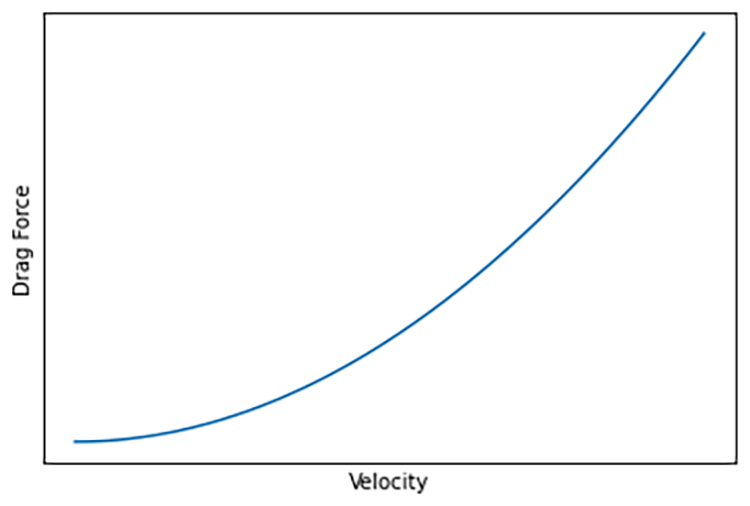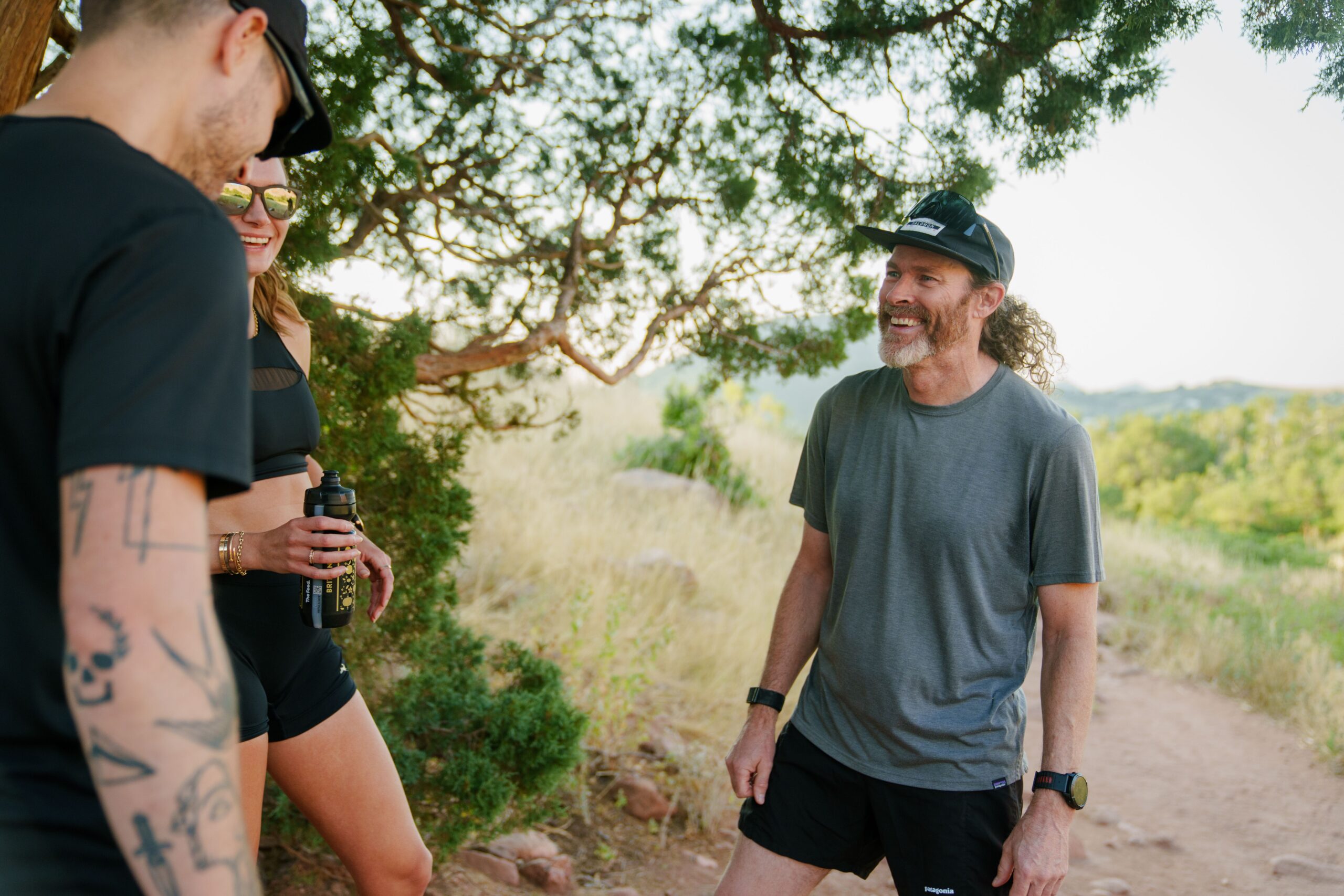In triathlon, athletes and coaches spend weeks and months preparing for races yet often don’t consider the course they will complete on with nearly as much detailed planning. Big-time gains are made by knowing small details such as elevation, likely weather conditions and where to take in nutrition. Considering factors like goggle selection on the swim, physics of the bike leg and nutrition care on the run — a scientific approach to managing the course can lead to an increased probability of success come race day.
The Swim
The obvious piece of course knowledge, which will help in the swim, is knowing where to go and what to look out for in the water. It is an athlete’s responsibility to know their way around the swim course. The key to this is looking for landmarks to sight from the water and selecting goggles carefully.
Light polarization and lens selection
The angle of the sun and start time of the race should play an important role in goggle lens selection. There’s no use in doing open water drills, being extremely fit for swimming and having a perfect wetsuit if you wear clear goggles on a sunny morning. Which lens color should you advise your athlete on though?
Direct bright sunlight should be countered with a dark gray, black or brown lens. This limits harsh light allowing your athlete to see more on the course. If it’s overcast, which is often the case on triathlon race mornings, lenses in the yellow color spectrum are best. A dark lens will block too much bright light, while overcast days generate a lot of light on the blue end of the visible spectrum, which yellow or amber lenses will counterbalance for better vision. The yellow lenses improve these lower light conditions and increase contrast, making the swim course buoys stand out more as they are typically a bright color relative to the darker water.
Water conditions and stroke pattern
When an athlete swims, their velocity is derived from the product of their stroke rate and their stroke length. We can write this as an equation.
sv = lstroke x rstroke
Where lstroke represents stroke length, rstroke represents stroke rate and sv represents swim velocity. Now, imagine for a moment we have waves in the water that ruin one in five of our athletes’ swim strokes. These conditions will cause our stroke rate to be reduced by one in five or 20%. Let’s update our equation, which would look like this.
Svwaves = lstroke x 0.8( rstroke)
We know that Svwaves is one-fifth slower, but can we get closer to swimming full-speed? Well, we can do this by shortening our stroke such that the waves only ruin one in 10 of our stroke rate, but now we must turn our arms over faster to counteract the reduction in stroke length. We now have a stroke that’s 10% shorter and a stroke rate 10% higher. However, one in 10 strokes is ruined by the waves, so our effective stroke rate remains the same as if the waters were calm. We now write Svwaves out as this equation.
Svwaves = 0.9(lstroke) x rstroke
With this reduction in stroke length, we are now offsetting the efficiency lost to the rough water conditions. This type of course preparation certainly requires specific training, as a higher stroke rate has different physiological demands if the athlete is untrained for such an adjustment. Athletes can use a Tempo Trainer to increase stroke rate for CSS/race pace-type workouts.
The Bike
Apps and websites such as BestBikeSplit have shown us that riding with constant power is not usually the fastest way to ride a course unless it is pan-flat with no wind. To understand why it’s best to consider a simple example. But first, we must keep in mind one fact: the aerodynamic resistance increases with the square of the speed we ride. We can write this as an equation.
𝐹 drag ≈ O forces x v2
We would express this as the force of drag is approximately equal to the product of other forces on the bike and the square of the velocity of the speed the bike is traveling. If we plot this force, we get something like the following curve.

The shape of this curve is what’s worth thinking about. As our speed doubles, the resistance increases four times. As our speed triples, resistance goes up by a factor of nine and so on. This means that as the road goes downhill, the drag force increases rapidly as we speed up, pumping more and more power into this system returns less and less. We get less reward for our energy investment the faster we are going. From 20kph on the climb to 80kph on a descent, drag force will increase 16 times! This is why pedaling at very high speeds is often, not always, a waste of energy. Carefully timed pedal strokes to maximize holding on to speed on descents are sensible, however, such as pedaling out of corners.
Knowing this, we can consider the simple example of a course where a descent follows a climb up. The rider has a set amount of energy they can expend throughout this bike leg, but where should they use it?
As the speed on the climb will be lower, let’s say one-quarter of the rate on the descent, the rider will only face one-sixteenth the amount of resistance from the wind. Although some of this reduced wind resistance is offset by the gradient as the rider is now forced to work against gravity, this is recovered down the other side of the hill. If the rider rides at a given power for the whole course, they’ll go only marginally faster on the way down than if they were pedaling with one-half of the power. If you pedal double the power on the descent, your speed will only increase about 40%, which is hardly a good return on investment. Whereas, if you increase your effort on the ascent, the boost in speed has a higher factor on overall speed. To simplify the notion, doing more watts on the climb and “recovering” on the descent is not only technically easier but faster, too.
Nutrition and aid on hilly courses
In the 2019 IRONMAN 70.3 World Championships race, Gustav Iden, the eventual winner, lost all of his nutrition at the base of the first climb. In hindsight, this was a blessing in disguise as he was able to ride up the climb — it was a hilly course in Nice, France — without the added weight of his bottles and collected nutrition from the aid station at the top. This wasn’t something that Gustav did on purpose, but it does make sense from a physics perspective, especially for athletes toward the front of the field where aid stations won’t be too crowded when going through them. It’s not surprising the commentators thought it was on purpose!
Avoiding carrying all of that weight is not always advantageous. However, slowing down at aid stations can cost time. If the aid station is at the top of a climb, the delay can be less of an issue. Generally speaking, the weight penalty for hauling your nutrition is worth taking if the bike course is relatively flat.
The Run
The approach to running should be one of nutrition, weather conditions and careful consideration of how fast that athlete will actually be moving by this point in the race. Several factors can influence how long a run course can take. Professional run splits will differ from course to course in long-distance races by up to 15 minutes, and this time gap is exacerbated by amateurs moving at a slower pace overall.
This potential time discrepancy, which can be caused by course length, hills or weather and the difficulty of the bike course, is often more than enough to make the difference between an extra gel or not. The last thing an athlete wants is to run out of nutrition, especially at this point in a race. Knowing what kind of nutrition is out on the course can save weight if it’s something the athlete is happy and has trained with, to use. For example, an athlete consuming 80g of carbohydrates for three hours on a marathon would need to consume between three and four gels per hour, totaling between nine and 12 gels of roughly 25g each. By using on-course nutrition instead, an athlete would be able to save up to 300g of weight, which can impact the speed they’re able to sustain. Weight carried during the first half of the run will add to fatigue in the later stages.
Prepare for the Course, Not Only the Race
Understanding the small details of a triathlon course and knowing likely weather conditions, course profile awareness and understanding of what nutrition options are available can lead to a series of small improvements which, on race day, can add up to potential time gains from several months of training. Taking more of a scientific approach to your athlete’s racecourse planning will give them more opportunities to achieve those race goals. While no strategy is perfect or fail-proof, minimizing the probability of running out of nutrition, using energy wisely or avoiding being blinded during the swim will undoubtedly reduce the likelihood of a disaster.










